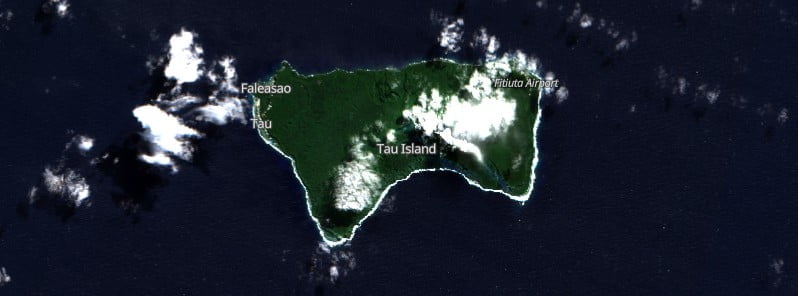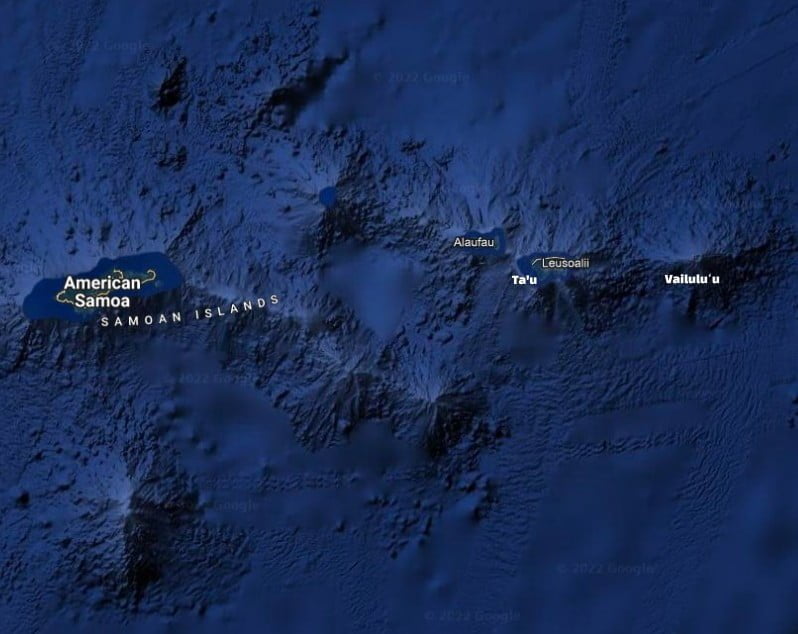Earthquake swarm in American Samoa closer to Ta’ū volcano than Vailuluʻu

Earthquake swarm in the Manuʻa islands of American Samoa continues, with a source most likely closer to Ta’ū island than Vailuluʻu seamount, the Hawaiian Volcano Observatory (HVO) reports.
A microseismometer (earthquake-detecting device) installed in Fitiʻuta village on Taʻū island yesterday is recording approximately 30 – 60 earthquakes per hour, but most events are too small to be felt.
Estimated magnitudes of the largest earthquakes, including the felt events, are between magnitude 2 and 3.
Due to limited earthquake monitoring equipment, the exact location of these earthquakes is currently unknown. However, a newly installed microseismometer in Fitiuta village on Taʻū island suggests that this activity is likely occurring closer to Taʻū island than the nearby submarine volcano Vailuluʻu.
Not all earthquake swarms on volcanoes result in eruptions, HVO said.1
Current low-level earthquake activity may continue and vary in intensity for days to months without an eruption. It is also possible that the swarm is an early precursor to an eventual eruption.
“At this time, we cannot determine which of these possibilities is more likely. A large explosive eruption similar to the Tonga eruption earlier this year is extremely unlikely.”

Geological summaries
Ta’u
The 10 km (6.2 miles) wide Ta’u Island, located at the E end of the Samoan islands, is ringed by sea cliffs. It is the emergent portion of the large Lata shield volcano.
A major flank collapse event around 22 ka resulted in the steep scarps on the southern side of the island. Two smaller shields were constructed along rift zones at the NW and NE tips of the island.
The NW corner of the island has a tuff-cone complex that ejected large dunite xenoliths and coral blocks. Numerous Holocene post-caldera cones occur at the summit and on the flanks.2
Vailulu’u
Vailulu’u, a massive basaltic seamount not discovered until 1975, rises 4 200 m (13 780 feet) from the sea floor to a depth of 590 m (1 935 feet) about one-third of the way between Ta’u and Rose islands at the E end of the American Samoas. It is considered to mark the current location of the Samoan hotspot.
The summit contains a 2 km (1.2 miles) wide, 400 m (1 312 feet) deep oval-shaped caldera. Two principal rift zones extend E and W from the summit, parallel to the trend of the hotspot. A third less prominent rift extends SE of the summit.
The rift zones and escarpments produced by mass wasting phenomena give the seamount a star-shaped pattern. On July 10, 1973, explosions were recorded by SOFAR (hydrophone records of underwater acoustic signals). An earthquake swarm in 1995 may have been related to an eruption. Turbid water above the summit shows evidence of ongoing hydrothermal plume activity.3
References:
1 Ta’u Island, American Samoa – HAWAIIAN VOLCANO OBSERVATORY INFORMATION STATEMENT U.S. Geological Survey Sunday, August 14, 2022, 7:03 PM HST (Monday, August 15, 2022, 05:03 UTC
2 Ta’u – Geological summary – GVP
3 Vailulu’u – Geological summary – GVP
Featured image credit: TW/SAM, Google

Commenting rules and guidelines
We value the thoughts and opinions of our readers and welcome healthy discussions on our website. In order to maintain a respectful and positive community, we ask that all commenters follow these rules.